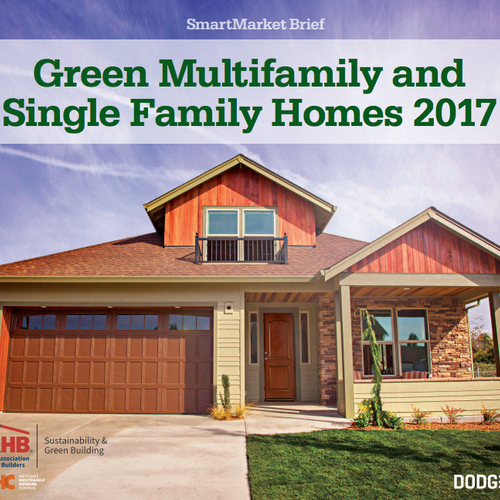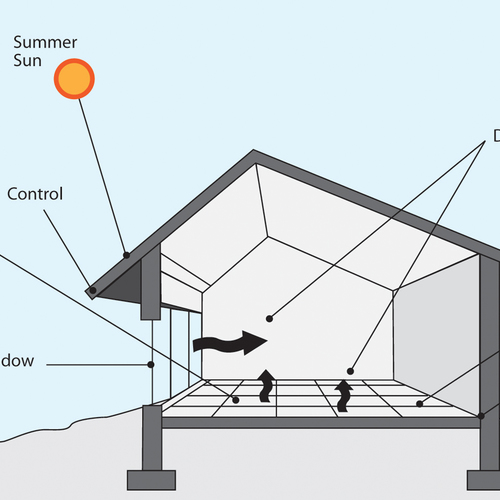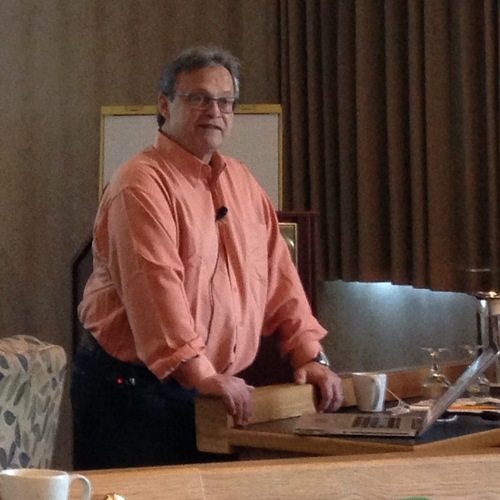
Lately I have been struggling with identifying the core concepts of green building and remodeling. For years I was comfortable with a list of four items: energy efficiency, durability, indoor environmental quality, and resource efficiency. Then I got an earful from my little unibrowed buddy, Michael Anschel, who pinpoints five core concepts: energy efficiency, water efficiency, resource efficiency, indoor environmental quality, and site and community impact. We had a spirited discussion about it, recorded for posterity, where I convinced him that he needed to include durability, based on my argument that too many professionals still have a long way to go toward making buildings durable.
Then Martin Holladay comes up with his “Green Homes Don’t Need to Be Durable” blog post, which he won’t let go of. Now I am really starting to question my own sanity and that of everyone else in the green building industry.
Let’s Try to Come Up with a Number
After a quick review of green building programs that I am familiar with, LEED for Homes has seven sections; the National Green Building Standard has six; Minnesota Green Star has five; and EarthCraft House has nine. Okay, now I am totally confused.
On top of this, I am currently working on a green building textbook with Abe Kruger, and we have come up with eight principles: energy efficiency, resource efficiency, durability, water efficiency, indoor environmental quality, community impact, homeowner education and maintenance, and sustainable site development. I realize that in the end, everyone is heading in the same direction via slightly different routes. Demand is rising, both in the industry and among consumers, for a single green standard that everyone can follow. While I can see that happening eventually, I expect that it will take a long time for all the existing programs to distill themselves down to a single, consistent standard. In the meantime, we will have to work with what we have.
Weekly Newsletter
Get building science and energy efficiency advice, plus special offers, in your inbox.















11 Comments
Does resource efficiency include what the buildings are made of?
I know I'm not making things better for you, but where does reusing materials come into play here? After all, building green starts with reusing materials already available, rather than expending energy and resources to make shiny new ones. I feel like too often the green building discussion leaves out the fact that the goal of going green is to reduce from the get-go.
Materials and the 3 R's
I guess I would agree with Amy that material reuse would fit into resource efficiency but would add that it could also be covered by energy efficiency, at least when looking at lifecycle costs in context beyond just the physical building. I think the all-to-familiar mantra of "Reduce, Reuse, Recycle" should play a fundemental role in establishing core principles of green building.
It maybe cliche at this point but it embodies, or is capable of including, all of the various principles mentioned in the article. We can apply a reductionist logic to categorize all of the opportunities available within these three principles, but we need to keep the the main vision for green building as simple as possible so it can't be diluted by greenwash or unintended complexity.
Buidlings are complex enough on their own. The massive bureaucracy of programs such as LEED don't serve the cause well in the end because they simply can't be understood in terms of the principles you are seeking. I think most of the argument about LEED that is currently taking place is occuring precisely because there is no consensus on what sustainable design really is. Let's keep it simple.
Slicing the carrot
I suggest we not try to slice the carrot too thinly and take two as the number of fundamental green building principles:
1) A green home must be good for the occupants, i.e., healthful, efficient, comfortable,...
2) A green home must minimize its impact on the environment. I agree Joe L. that energy is the number one priority here, but water, waste, runoff, materials, embodied energy, and the other broader goals of green building programs fall under this category as well.
Also, I agree with Martin about the issue of durability. It's a relative term because you don't want to have to pay for repairs because of shoddy flashing, for example, but neither do you want to have to keep a crappy building just because it won't go away by itself.
The real problem here is that we've experienced such fantastic wealth over the past century that we've been able to go on a building binge without regard for the two principles above, and now we're stuck with an inappropriate infrastructure for the lower energy world we're entering because of peak oil.
I think Jim Kunstler put it best when he said that suburbia is "the greatest misallocation of resources in the history of the world."
Must a green home be healthful to occupants?
Allison,
Thanks for the support on the durability issue.
I must question your first principle, however. Why do some people think that a green home must be healthful for the occupants? What in heaven's name does that have to do with "green"? If a home isn't healthful for the occupants, it's time to arrest and jail the builder.
Here's the bottom line: we have a building code that applies (in most states) to all new homes. That code is supposed to ensure that a house meets certain basic structural, fire safety, energy efficiency, and (yes) health requirements. We can all argue about whether the bar is too high or too low, but I think we can all agree with Hammurabi that, at a bare minimum, houses shouldn't collape on their occupants.
Beyond code, we have certain ethical and legal obligations. I hereby assert that every builder in America should strive to build a building that is healthful to the occupants. Let's not drop the bar any lower!
That's basic common sense. That's not green. If green means no more than we've decided we won't make people sick, that's a pretty low standard. Aim higher, brothers and sisters!
Some people say that a green home should be comfortable. What's that mean -- it's warmer than 55 degrees F in January? In other words, let's start with what the legal profession calls stipulations. I'll stipulate that every building should meet code; not make occupants sick; and should be comfortable. I expect any type of green standard to offer something BEYOND those stipulations.
What about Beauty & Inspiration?
Hello all (and Hi Allison - so nice to casually "bump" into you here...).
Cascadia Region Green Building Council has authored the Living Building Challenge, which I will attest to being the most rigorous standard today. I think my most favorite aspect is the Beauty + Inspiration requirement, which states:
"As a society we are often surrounded by ugly and inhumane physical environments. If we do not care for our homes, streets and offices then why should we extend care outward to our farms, forests and fields? When we accept billboards, parking lots and strip malls as being aesthetically acceptable, in the same breath we accept clear-cuts, factory farms and strip mines. The Living Building Challenge recognizes the need for beauty as a precursor to caring enough to preserve, conserve and serve the greater good."
Prerequisite Fifteen is:
"The project must contain design features intended solely for human delight and the celebration of culture,spirit and place appropriate to the function of the building".
While my opinion as an employee of Cascadia is biased, the Living Building Challenge is the sole set of criteria that require 16 actions - that's it. That's the program. While these requirements are the most rigorous to achieve - like net-zero water and net-zero energy - its success lay in the ability to distill, into its essence, what we think are the most important aspects of reaching true sustainability in the built environment.
If you're interested, you can learn more and download the standard here: http://www.ilbi.org/
Best,
Darby Strong
Program Coordinator
P.S. Version 2.0 of the standard coming this Fall.
Durability is an issue
Imagine a community of 10,000 homes. If built with conventional construction, those homes require reroofing, paint, termite control, and continued weatherproofing from 5 to 20 years out of the box. Now consider a community of homes that require no roofing, no paint, no weatherproofing, etc for 50 years. Then consider natural disasters such as hurricanes, tornados, earthquakes, fires and floods. I build homes that will last at least 100 years and are highly resistant to these elements. Surely durability is a key issue since replacing a home means tearing the old one down, or picking up the pieces after a disaster, sending it off to a landfill, and using more resources to rebuild. Durability must be a key issue of building green since building materials are finite. Building repair is costly and uses more materials. Paint, Shingles, waterproofing all use petroleum based products. You can build as many green buildings as you want but if they all get blown away with the first hurricane I can assure you that you are not being responsible to the environment.
Durability in Cultural Context
I appreciate the discussion over durability! I think that taken in the context of American consumer culture durability is a critical element of green building. However, removed to another place and culture where people have less permanent structures as part of their cultural norms durability becomes relevant and a structures ability to last 100 years is not significant, nor environmentally sustainable.
Beauty and Durability
It seems to me that durability is both an appropriate and environmentally friendly strategy, but not simple to prescribe with green building standards. Buildings that stand up to elements that they are subject to are undoubtedly important. It clearly creates waste to build buildings that mold, are blown down by hurricanes or are not seismically enforced when appropriate. It is also vital to note that poorly made building products or poorly protected high traffic areas will also result in needless waste. But just because something is durable, does not mean it will be used for its durable life. Anyone who has remodeled a home or works in a retail space knows that we routinely tear out building materials that are still perfectly functional, just not currently in style. What good does durable building material do when its sitting in a landfill? I fear the day when highly durable granite counter tops are the style equivalent of avocado Formica.
This is where Darby's comment becomes exceptionally important; we tend to preserve and protect buildings and parts of buildings which are beautiful and inspiring. Even harder to define and require than durability, but there are real material implications to "beauty" decisions.
Durability is key, Common Green Standard is needed
After reading all of the comments on this issue I have to agree with the principle that we need to build durable buildings and everyone needs to build to the same green standard. Although I believe that everyone who commented above has excellent ideas on the principles and core issues of green building there is great need to consolidate all of these valid principles and make one standard. Those of us who have been in the movement for the last three decades have experienced politically, socially, philosophically and economically, the trials and tribulations that have developed what "Green Building" is today. Those that are entering the field today do not have the benefit of experiencing those days. They rely on Leed, the National Green Building Standard, Green Globes, Energy Star, Earthcraft etc to define the principles for them. The general population has been comfortably numb for this period regarding the environment and thusly green building. At this point in time most people will not read all of the material published on green building but will migrate toward what makes them feel comfortable and facilitates their needs. A single standard for all to build by would put everyone on the same page, make education to the principles of Green Building easier to teach, and give the building professionals and the public a common ground for discussion and discourse. I believe that all of the comments above are excellent and and define the philosophy and passion of each of the authors. Why not consolidate them into one standard? I am a builder of 30 years, and a licensed building official for 21 years. My argument against the building code is that it only enforces the minimum standards. It does not provide one standard for "all" to build by. If we only enforce the minimum standard of building how can we expect to build as perfect a product as possible? Our core issue of "Durability" certainly takes a big hit here. The same is true for the principles of green building. Unifying the standard will strengthen the population of designers and builders who carry on for the next generations. Discussion and discourse to establish a unified standard will blend all of the ideas into a sound program for education and implementation. It will foster a progressive attitude in the public sector because everyone will have access to the same information. Ongoing discussions will continuously upgrade the standards and the onset of new materials and ideas will keep the industry fresh. Although there is much talk about green building, there is still a great need to get many politicians and people on board. We need to foster discussions for all to participate in, develop education that will attract people, and lose the corporate mentality which many private organizations have grown into. GBA allows people to be a community, sharing ideas and philosophies. Development and implementation of ideas always starts in the grassroots.
ASTM E2432 Three Principals of Sustainability
DRU MEADOWS, with the GreenTeam, Inc., Tulsa, Okla.,
writes about the ASTM standard E2432 and three general principals of sustainability
1) environmental, 2) economic & 3) social.
Here is her link http://www.astm.org/SNEWS/NOVEMBER_2007/meadows_nov07.html
beauty & durability in regards to being "green"
As a home designer, I must insist that beauty is not something we can mandate. My clients' tastes & desires are just that, theirs, and I may think they are unattractive, but it is what they want. How can we regulate that? Durability is a very vague term as well. Of course we want the structure to last through a reasonable lifespan, but I agree with the point about the avocado Formica counter tops... My impression of green includes an eventually decomposing of cast off items. Plastics, styrofoam, concrete, fiberglass, etc. never break down and fill the dumps permanently.
Log in or create an account to post a comment.
Sign up Log in